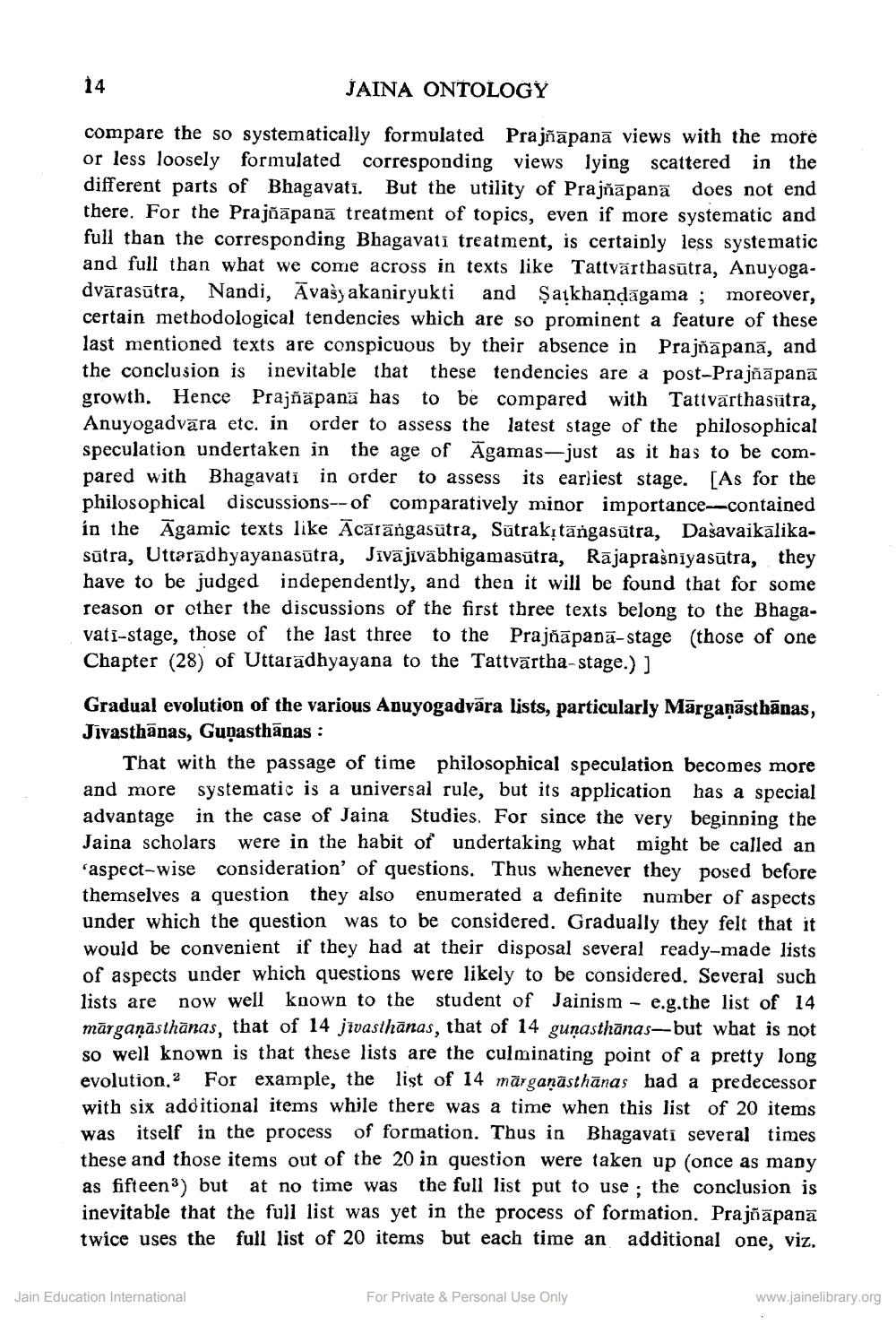________________
14
JAINA ONTOLOGY
compare the so systematically formulated Prajñāpanā views with the more or less loosely formulated corresponding views lying scattered in the different parts of Bhagavati. But the utility of Prajñāpanā does not end there. For the Prajñāpanā treatment of topics, even if more systematic and full than the corresponding Bhagavati treatment, is certainly less systematic and full than what we come across in texts like Tattvärtha sūtra, Anuyogadvārasūtra, Nandi, Avasy akaniryukti and Sakhandāgama ; moreover, certain methodological tendencies which are so prominent a feature of these last mentioned texts are conspicuous by their absence in Prajñāpanā, and the conclusion is inevitable that these tendencies are a post-Prajñāpanā growth. Hence Prajñāpanā has to be compared with Tattvārthasütra, Anuyogadvara etc. in order to assess the latest stage of the philosophical speculation undertaken in the age of Agamas—just as it has to be compared with Bhagavati in order to assess its earliest stage. [As for the philosophical discussions--of comparatively minor importance-contained in the Agamic texts like Ācārängasūtra, Sutrakitangasūtra, Dašavaikālika. Sūtra, Uttaradhyayanasūtra, Jivajivabhigamasutra, Rajaprasniyasūtra, they have to be judged independently, and then it will be found that for some reason or other the discussions of the first three texts belong to the Bhagavati-stage, those of the last three to the Prajñāpanā-stage (those of one Chapter (28) of Uttaradhyayana to the Tattvārtha-stage.) 1
Gradual evolution of the various Anuyogadvāra lists, particularly Mārgaņāsthānas, Jivasthānas, Gunasthānas :
That with the passage of time philosophical speculation becomes more and more systematic is a universal rule, but its application has a special advantage in the case of Jaina Studies. For since the very beginning the Jaina scholars were in the habit of undertaking what might be called an 'aspect-wise consideration of questions. Thus whenever they posed before themselves a question they also enumerated a definite number of aspects under which the question was to be considered. Gradually they felt that it would be convenient if they had at their disposal several ready-made lists of aspects under which questions were likely to be considered. Several such lists are now well known to the student of Jainism - e.g.the list of 14 mārganästhānas, that of 14 jivasthānas, that of 14 gunasthānas--but what is not so well known is that these lists are the culminating point of a pretty long evolution. For example, the list of 14 märganāsthānas had a predecessor with six additional items while there was a time when this list of 20 items was itself in the process of formation. Thus in Bhagavati several times these and those items out of the 20 in question were taken up (once as many as fifteen3) but at no time was the full list put to use ; the conclusion is inevitable that the full list was yet in the process of formation. Prajñāpanā twice uses the full list of 20 items but each time an additional one, viz,
Jain Education International
For Private & Personal Use Only
www.jainelibrary.org




